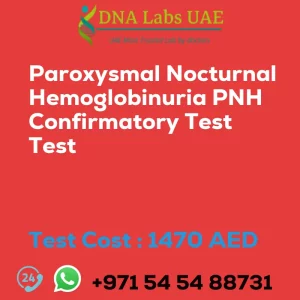FACTOR II FUNCTIONAL Test
Cost: AED 1680.0
Test Name
FACTOR II FUNCTIONAL Test
Components
Price: 1680.0 AED
Sample Condition
3 mL whole blood in 1 Blue Top (Sodium Citrate) tube. Mix thoroughly by inversion. Transport to Lab within 4 hours. If this is not possible, make PPP within 1 hour of collection as follows: Centrifuge sample at 3600 rpm for 15 min. & transfer supernatant to a clean plastic tube. Centrifuge this supernatant again at 3600 rpm for 15 mins. & finally transfer the supernatant (PPP) to 1 labelled, clean plastic screw capped vial. FREEZE IMMEDIATELY. Ship frozen. DO NOT THAW. Overnight fasting is preferred. Duly filled Coagulation Requisition Form (Form 15) is mandatory.
Report Delivery
Sample Thu by 9 am; Report Next day
Method
Photo-optical Clot Detection
Test Type
Disorders of Coagulation
Doctor
Hematologist
Test Department
Pre Test Information
Overnight fasting is preferred. Duly filled Coagulation Requisition Form (Form 15) is mandatory. It is recommended that the patient discontinues Heparin for 1 day and Oral Anticoagulants for 7 days prior to sampling as these drugs may affect test results. Discontinuation should be with prior consent from the treating Physician.
Test Details
Factor II, also known as prothrombin, is a protein involved in the blood clotting process. A functional test for Factor II assesses the activity of this protein in the blood. The Factor II functional test is typically performed to evaluate the risk of abnormal blood clotting or bleeding disorders. It can help diagnose conditions such as Factor II deficiency or thrombophilia, which is an increased tendency to form blood clots.
During the test, a blood sample is collected from the patient. The sample is then processed in a laboratory to isolate the plasma, which contains the clotting factors. The plasma is mixed with other substances that trigger the clotting process. The time it takes for the blood to clot is measured and compared to a normal range. If the clotting time is prolonged, it may indicate a deficiency or dysfunction of Factor II.
The test results are usually reported as a percentage of normal activity. A result of 100% indicates normal Factor II activity, while lower percentages suggest a deficiency or dysfunction. The severity of the condition can be determined based on the degree of abnormality in the test results.
Factor II functional test results are interpreted by a healthcare provider, who will consider the patient’s medical history and symptoms to make a diagnosis. Further testing, such as genetic testing or additional clotting factor assays, may be necessary to confirm the diagnosis and determine the appropriate treatment plan.
It is important to note that the Factor II functional test is just one component of a comprehensive evaluation for blood clotting disorders. Other factors, such as Factor V Leiden mutation, protein C and S levels, and antithrombin levels, are often evaluated in conjunction with Factor II to provide a more complete picture of a patient’s clotting risk.
| Test Name | FACTOR II FUNCTIONAL Test |
|---|---|
| Components | |
| Price | 1680.0 AED |
| Sample Condition | 3 mL whole blood in 1 Blue Top (Sodium Citrate) tube. Mix thoroughly by inversion. Transport to Lab within 4 hours. If this is not possible,make PPP within 1 hour of collection as follows: Centrifuge sample at 3600 rpm for 15 min. & transfer supernatant to a clean plastic tube. Centrifuge this supernatant again at 3600 rpm for 15 mins. & finally transfer the supernatant (PPP) to 1 labelled, clean plastic screw capped vial. FREEZE IMMEDIATELY. Ship frozen. DO NOT THAW. Overnight fasting is preferred. Duly filled Coagulation Requisition Form (Form 15) is mandatory. |
| Report Delivery | SampleThu by 9 am; Report Next day |
| Method | Photo-optical Clot Detection |
| Test type | Disorders of Coagulation |
| Doctor | Hematologist |
| Test Department: | |
| Pre Test Information | Overnight fasting is preferred. Duly filled Coagulation Requisition Form (Form 15) is mandatory. It is recommended that patient discontinues Heparin for 1 day and Oral Anticoagulants for 7 days prior to sampling as these drugs may affect test results. Discontinuation should be with prior consent from the treating Physician. |
| Test Details |
Factor II, also known as prothrombin, is a protein involved in the blood clotting process. A functional test for Factor II assesses the activity of this protein in the blood. The Factor II functional test is typically performed to evaluate the risk of abnormal blood clotting or bleeding disorders. It can help diagnose conditions such as Factor II deficiency or thrombophilia, which is an increased tendency to form blood clots. During the test, a blood sample is collected from the patient. The sample is then processed in a laboratory to isolate the plasma, which contains the clotting factors. The plasma is mixed with other substances that trigger the clotting process. The time it takes for the blood to clot is measured and compared to a normal range. If the clotting time is prolonged, it may indicate a deficiency or dysfunction of Factor II. The test results are usually reported as a percentage of normal activity. A result of 100% indicates normal Factor II activity, while lower percentages suggest a deficiency or dysfunction. The severity of the condition can be determined based on the degree of abnormality in the test results. Factor II functional test results are interpreted by a healthcare provider, who will consider the patient’s medical history and symptoms to make a diagnosis. Further testing, such as genetic testing or additional clotting factor assays, may be necessary to confirm the diagnosis and determine the appropriate treatment plan. It is important to note that the Factor II functional test is just one component of a comprehensive evaluation for blood clotting disorders. Other factors, such as Factor V Leiden mutation, protein C and S levels, and antithrombin levels, are often evaluated in conjunction with Factor II to provide a more complete picture of a patient’s clotting risk. |








